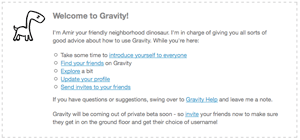Last night I read a very cynical article on The Guardian’s Arts Diary about the Royal Shakespeare Company’s latest Twitter project, ‘Such Tweet Sorrow.’ 
The article reads:
It is possible that I am just too old for this kind of thing. But for a start, Twitter’s public, right? So it somewhat stretches credibility to think that Romeo and Juliet would use it to conduct their secret love affair. Second – the whole thing’s interminable. It’s been going for a fortnight, and we’ve only just had Romeo and Juliet falling for each other. And third, didn’t the original have something to do with poetry? Does a tweet like “Goooooooooood morningggggg :):):):):):) It happened….. with THE most beautiful boy alive…. IT happened :):):):):)” really cut it?
Source: a plague on the Twitter Romeo and Juliet
I think the above article, penned by Charlotte Higgins, fails to see the potential of the RSC’s Twitter project. Personally, I’m pleased that the RSC are putting something out there that makes Romeo and Juliet (and indeed Shakespearean literature) accessible to youngsters. No, not people in their twenties or even late teens, I’m talking about the 12, 13, 14 year olds who DO talk in this way and who DO conduct most of their relationships over social networking sites in public. OK, perhaps not secret relationships like Romeo and Juliet, but at least the story becomes more relevant and more interesting to this age group.
A quick look at some of my younger connections’ Facebook profiles and I find the the writing style of Romeo and Juliet isn’t too far off the mark. Plus, who cares if ‘the whole thing’s interminable, it’s been going on for a fortnight?’ The Tweets will be archived, and in a year or so, kids will be able to go through the website and read them all like a book. I’d even encourage the RSC to get their project printed up into book!
What’s your opinion?
Are you still at school? Would you rather read the RSC’s account of Romeo and Juliet on Twitter or do you prefer a bit of Shakespeare? Do you think it’s easier to understand? Or is it a bit lame? Let me know what you think!



 I purchased
I purchased